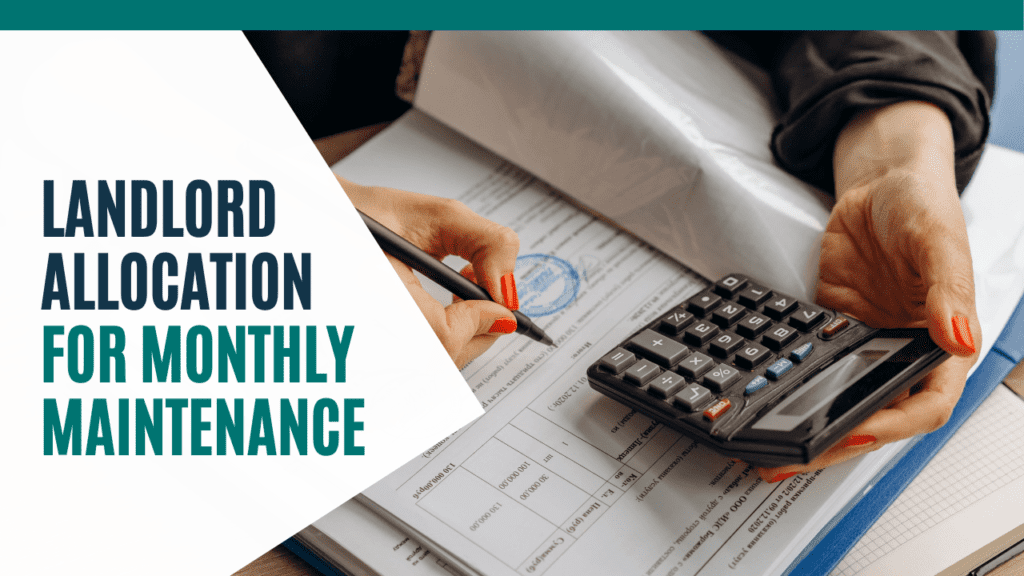
Budgeting for standard monthly and/semi-annual maintenance and repairs are two aspects of rental property management that Seattle landlords cannot ignore. Having a regular and consistent budget for ongoing preventative maintenance and savings for larger capital expenses may seem expensive. However, failing to account for maintenance will undoubtedly cost you more with exorbitant rates for emergency repairs and vendor scheduling when systems fail. A reasonable monthly amount can extend the life of the major systems (and most expensive to replace) by years, which in the long run will substantially increase your cash flow and overall return on investment. In addition, well-maintained property is much more desirable to prospective tenants and will command a higher market rent, than a property with deferred maintenance and only marginally functional systems.
It can be difficult to predict the monthly cost of emergency repairs as you never really know what is going to fail, how much it’s going to cost or when it will be necessary especially if you’re not regularly maintaining your systems.
With a regular maintenance program, a bit of foresight is gained when larger expenses are coming. An expert HVAC Technician that provides annual service can gauge when the unit is reaching the end of its serviceable life, so landlords can start to plan and save even as far as 1-2 years in advance for having to replace a unit.
If there are evergreen trees close by your rental property, having the roof cleaned and treated regularly for moss can extend its lifespan by 5-10 years and avoid leaks that could further damage the interior of your property.
During unit turnovers, spending a little extra money to add a couple more hours and a few items to a handyman’s scope of work to clear p-traps, re-caulk plumbing fixtures, tighten door/cabinet hinges, clear gutters, etc. when they will be on-sight taking care of regulatory mandated items (testing smoke detectors/carbon monoxide detectors, rekeying locks, etc.) is by far more efficient and cost-effective than waiting until those issues develop into a clogged kitchen/bathroom sink, a water-soaked subfloor and mold issue, cabinet door that falls off, a bathroom door that won’t close, or a roof leak or clogged storm drain line, that a tenant complains about and you as a landlord are mandated by Washington state law to respond within difficult to achieve timelines and having to dispatch a specific vendor to deal with each larger issue individually.
A recent report suggested that homeowners spend an average of $1,105 on maintenance every year, and more than a third of owners encountered an emergency repair that they weren’t expecting. Here are some tips for Seattle landlords to calculate and allocate a monthly maintenance budget for your investment rental.
Reserve One Percent of Total Home Value
A best practice in property management is the One Percent Rule, i.e., you set aside one percent of your home value annually for ongoing maintenance. For example, if you own a single-family rental home that costs $600,000, you’ll want to set aside $6,000 a year for maintenance. You can further break this down to find monthly maintenance costs.
Although this method of calculation is not completely reliable, it provides you with a place to start. For example, if you want to save $6,000 per year to cover the cost of maintaining your rental property, you can reserve $500 of your monthly rental income for potential maintenance costs. If you have a home that’s in great condition, this can be reduced further to $200 or $300 per month.
Reserve 10 Percent of Rental Income
Some landlords set aside 10 percent of their monthly income to cover any potential maintenance needs for that month. For instance, if you’re renting out your home for $2,500, you can save $250 a month for plumbing costs, gutter cleaning, or HVAC servicing. However, as these expenses do not occur every month, you can save up in the months when you do not have a lot of maintenance to cover larger repairs later, such as roof replacements or new flooring.
Personalize Your Maintenance Savings Plan
There’s no hard and fast rule to decide what amount you should allocate to your monthly maintenance budget. You might want to incorporate both the one percent rule and the percentage of monthly rent rule. If you take the averages above: $500 per month under the one percent rule and $250 per month under the monthly rent rule, the total average comes to $375 per month. You can calculate your personalized maintenance budget in a similar manner.
 For owners with multiple properties a pooled maintenance fund and/or equity line of credit may be a good idea to lessen the hit to cash flow. Also, as your rental property portfolio grows the scales of the economy help to reduce the burden of saving for maintenance expenses. It is a rare event for a landlord with 10 or more properties to have simultaneous issues at all of their properties.
For owners with multiple properties a pooled maintenance fund and/or equity line of credit may be a good idea to lessen the hit to cash flow. Also, as your rental property portfolio grows the scales of the economy help to reduce the burden of saving for maintenance expenses. It is a rare event for a landlord with 10 or more properties to have simultaneous issues at all of their properties.
Just remember it’s not a matter of when maintenance costs will arise. Putting a preventative maintenance plan in place and savings for larger capital improvements will help you to maximize both your cash flow and overall return on investment, all making your property more attractive to tenant prospects.
Talk to a trusted property manager who can work with you on preparing and putting a regular maintenance plan into action, repairing, and protecting your investment. For more customized advice on how to allocate monthly maintenance, contact our team at ACRES Property Management. We provide residential management to owners and investors in Seattle as well as Tacoma, Burien, Normandy Park, Des Moines, Federal Way, and surrounding areas.
 Josh Auxier
Josh Auxier